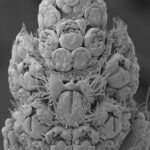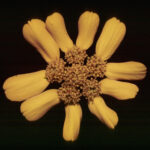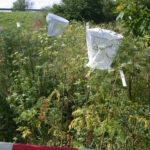Inflorescences present flowers in space and time and, thus, directly influence the reproductive success of plants. Located in the transitional zone between the vegetive and floral part of the shoot systems, they are of special interest for developmental genetic studies.
We are mainly interested in three aspects: the morphology and development of inflorescences, the evolution of flower-like units (pseudanthia) and the architecture and flowering sequence of inflorescences as reproductive units.
- Based on our ontogenetic studies, inflorescences originate from specific inflorescence meristems and form a body and a periphery. The body can be reduced to four basic forms, the periphery is composed of flowers or multiflowered Floral Units. Floral Unit Meristems resemble flower meristems and raise questions about the homology and evolution of inflorescences.
- Pseudanthia are inflorescences with analogous similarity to flowers. The best-known examples are found in the Asteraceae. Our studies including representatives of more than 20 angiosperm families provide the basis for ongoing evolutionary and developmental genetically research. Examples with flower dimorphism are of special interest. Differential gene expression and spatial constraints during development appear to influence the species-specific shape.
- Architecture and flowering sequence affect the attractiveness of inflorescences for pollinators or establish appropriate conditions for wind- and water-pollination. Using the umbel family (Apiaceae) as an example we show how andromonoecy and multicyclic dichogamy influence the degree of outcrossing.



